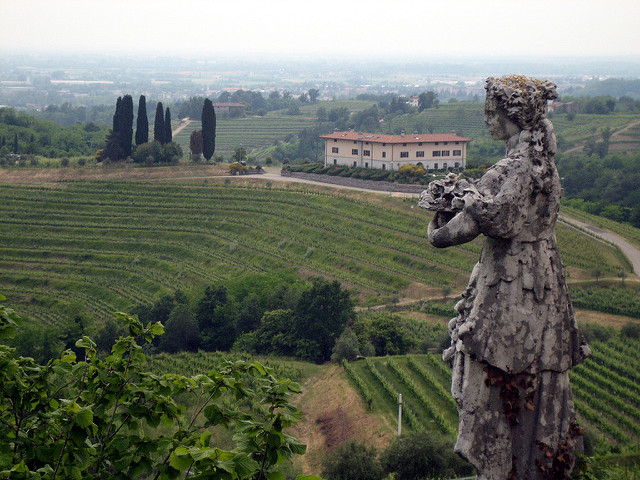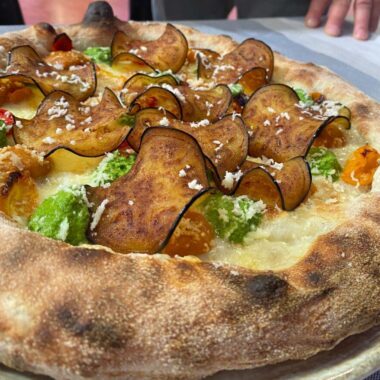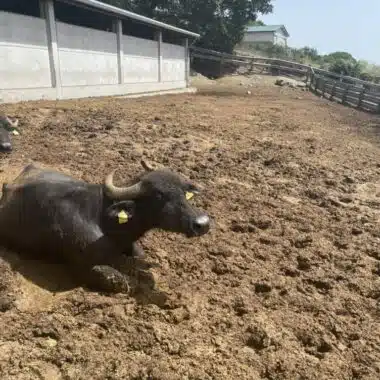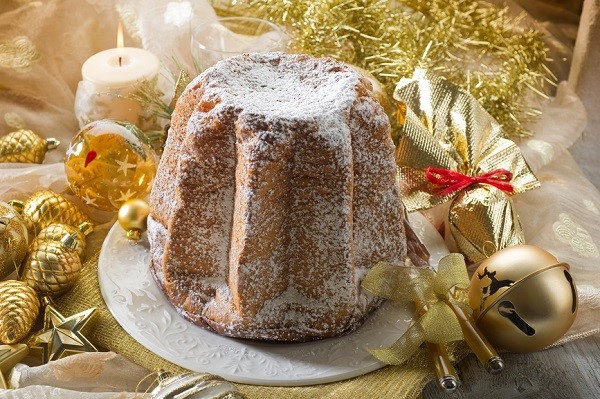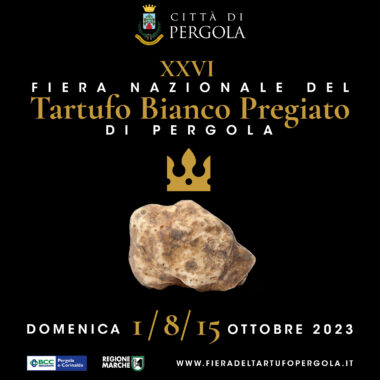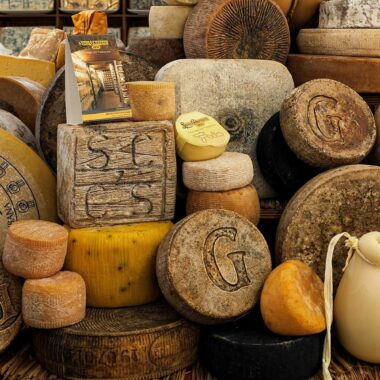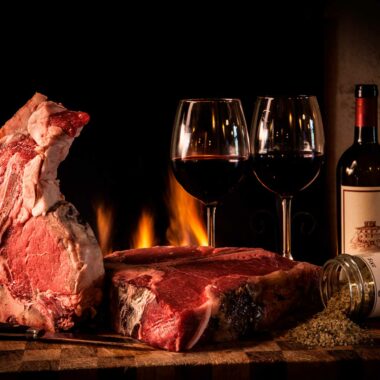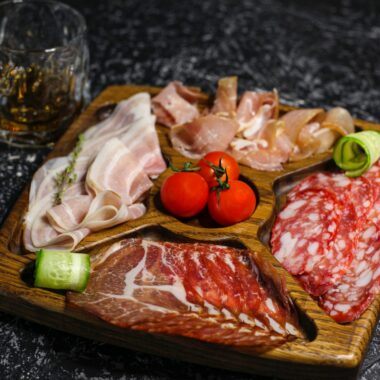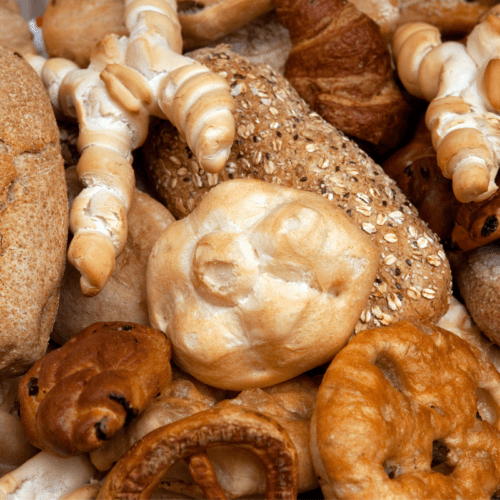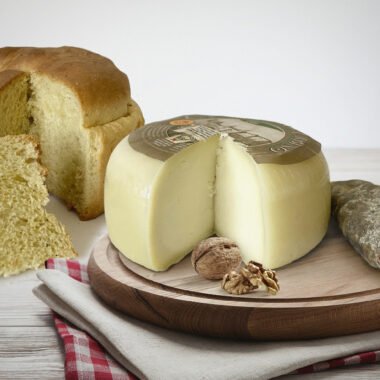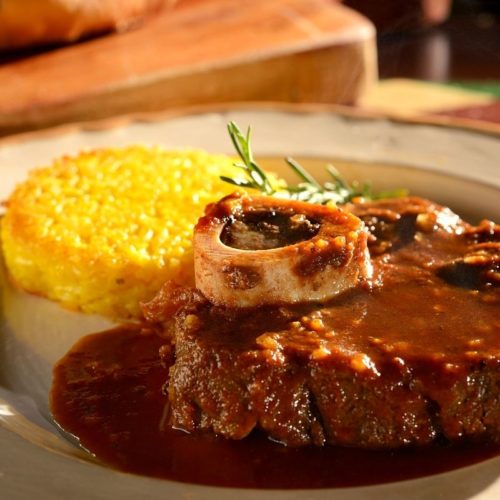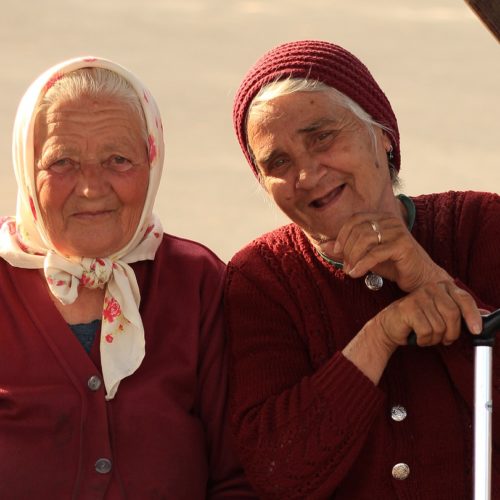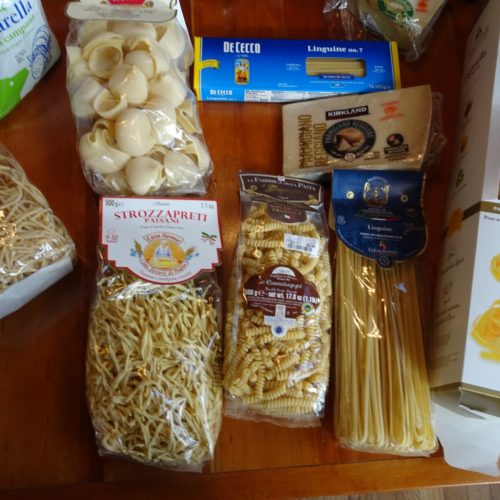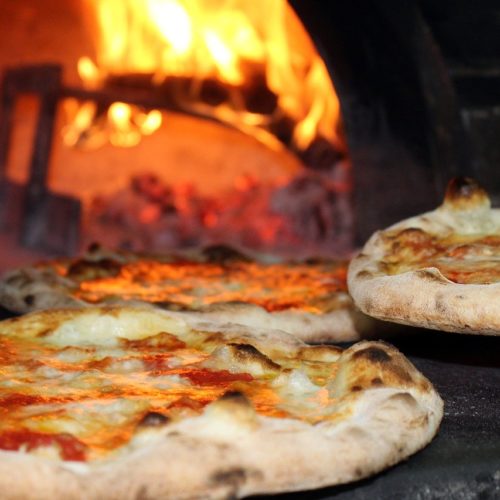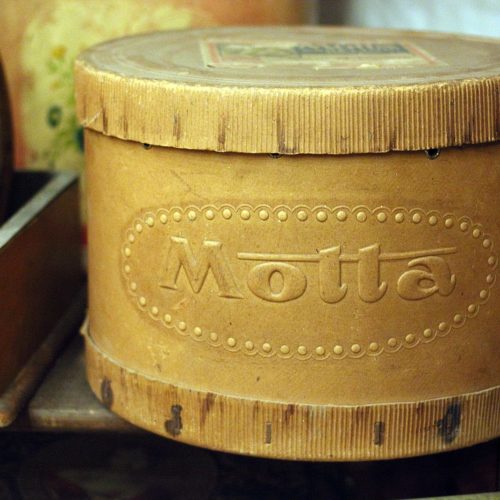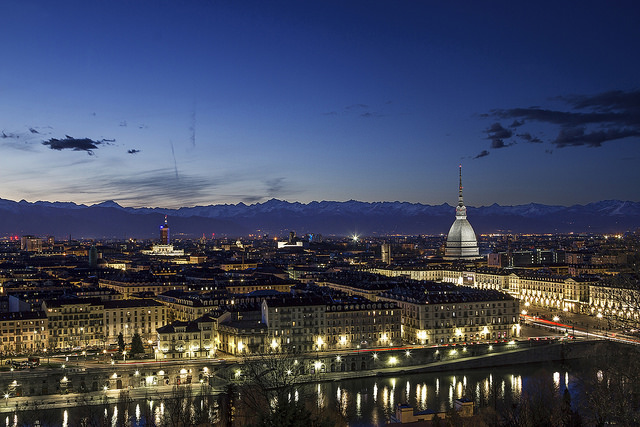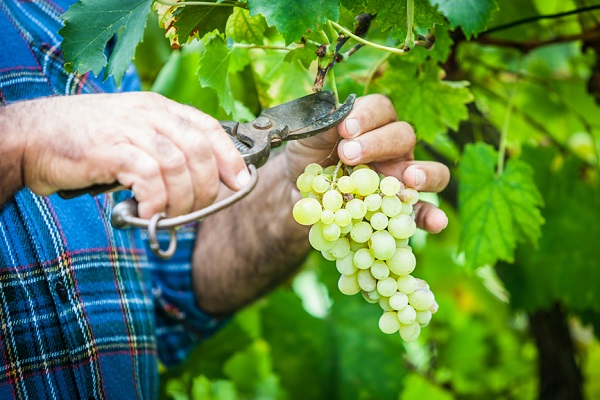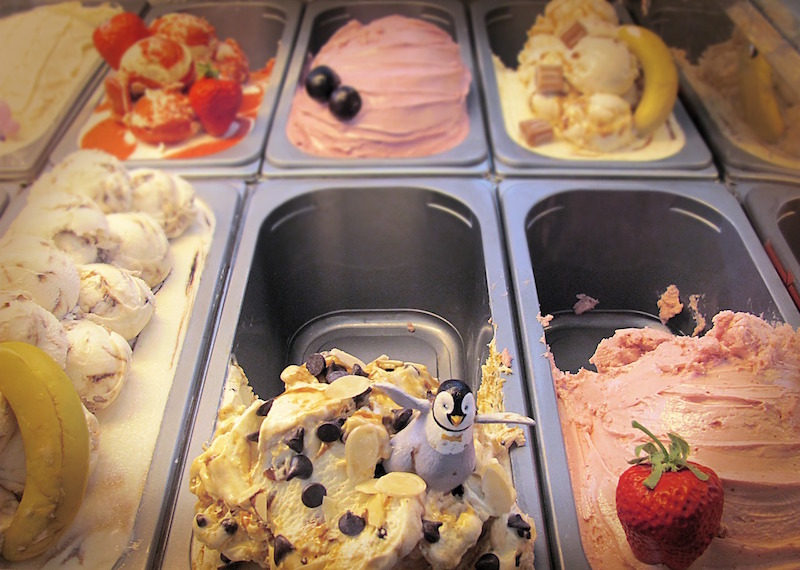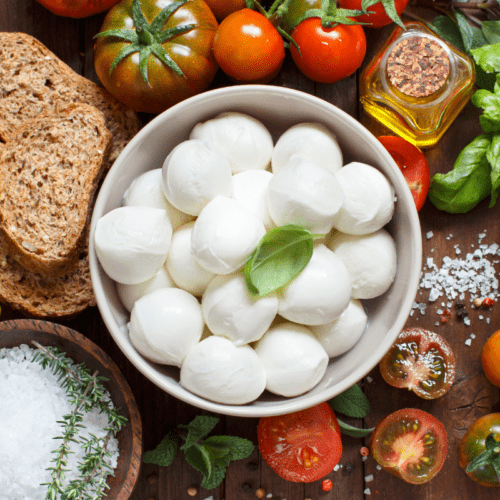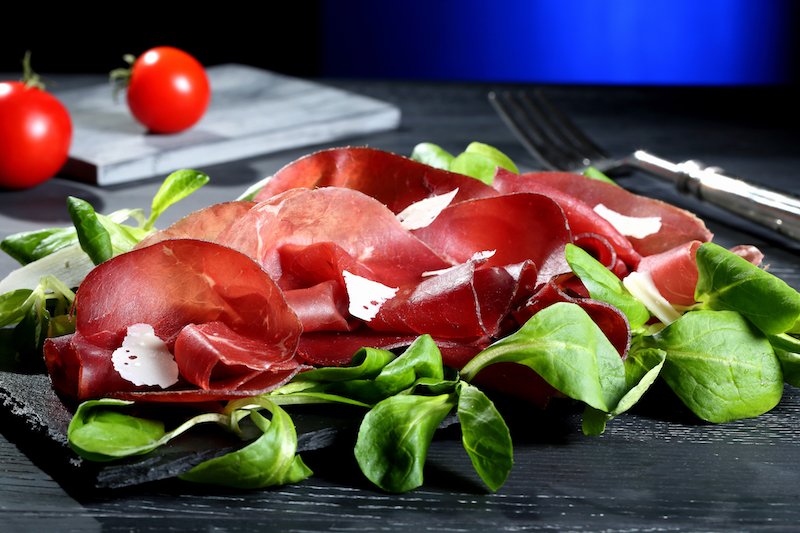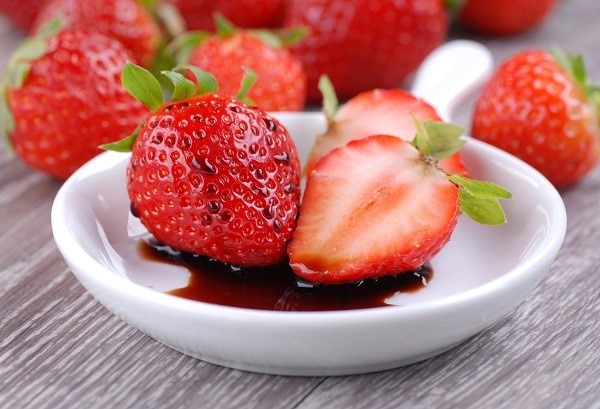Istrian Lamb, oil, Vitovska wines and Tabor cheese. The offspring of the hard Carso uplands, battered by the wind and rich in attractive little villages. And in cosmopolitan Trieste, a special cooked ham, confectioners and historical cafes. Learn about Terrano wines and more. Discover the food in Friuli Venezia Giulia, Italy.
Food in Friuli Venezia Giulia, Italy
The Terrano wine
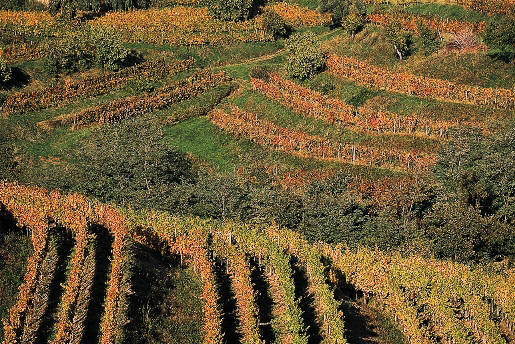
The harsh upland of the Carso is buffeted by the wind but well-endowed with characteristic little villages, meadows, and scented grasses. In this area, with its typical red soil, traditional vines are planted near Trieste; carefully preserved over the years and thanks to a contemporary wine-making culture that is responsive to tradition, these vines now produce excellent wines, such as Terrano and Vitovska.
The sunny terraces, marked by rough dry stone walls, are used to grow olives from which fine oil is made, boasting a glorious tradition dating back to Roman times. The center of this district is San Dorligo della Valle, which is especially sunny and protected from the wind, thus offering a “special”, ideal microclimate for the oil. The Carso oil is made in traditional small olive presses in which the olives from the moraine and sandstone hills of the Muggia area and the basins of the Ospo and Rosandra streams are crushed.
Carso, Italy
The plateau of the Carso offers some hidden resources. Here, Istrian lamb is raised in the open and fed local grass, and so has a flesh full of flavor. It is another highlight of the food in Friuli to try!
This same area is also home to two formidable kinds of cheese: Tabor, where the forms of cheese are first immersed in a special pickle before being left to season for a month; and Monte Re. The tradition for its preparation appears to date back to Austro-Hungarian times. Today, it is produced in Monrupino in a single dairy farm, using cow’s milk, although in the past this used to be mixed with milk from goats and sheep as well.
Dropping down from the plateau, the city of Trieste immediately appears, splendidly located by the Adriatic. This monumental, cosmopolitan center is the city of the “bora” wind. Amongst its attractions are the historic cafes, offering a feeling of the past, and the characteristic “buffets”, where a hot dish is available at all hours; mainly based on pork in all its forms, these dishes are accompanied by mustard or freshly-grated horseradish. Here, the Cotto di Trieste (Trieste ham, known for some unknown reason as ‘Prague ham’) is traditionally sliced by hand and accompanied with a glass of white wine from the Carso.
Wandering from cafe to cafe, you will find the traces of the many cakes of Slovene or Austrian origin, and linger admiringly before the tidy and clean historic confectioner’s shop, with their dressers stretching up to high ceilings and antique furniture.
The Collio Itinerary
Excellent wines and enchanted landscapes dotted here and there with little hamlets nestling amongst the vines. An opportunity to taste Pinot bianco and Ribolla gialla, the ham of Cormons and the Rosa di Gorizia chicory. And savor the heady aromas of Slovene and Austro-Hungarian origin.
Follow the “vallone” road, leaving Monfalcone on the left, together with its shipyards and the plains of the Isonzo river, whose waters create the ideal conditions for cultivating vines. The finest wine in this DOC district is Pinot bianco. There are many inns and restaurants here offering fine food and wine, but it is worth mentioning one in particular: the Enoteca Regionale La Serenissima at Gradisca d’Isonzo. Thanks to its excellent and renowned production of finest wines, already planned on the vine and refined in the cellar, Cormons has also become a member of the prestigious “Citta del Vino” association.
Cormons lie at the center of a unique landscape, marked by vineyards, small villages, and oak and beech woodlands. This is the Collio Goriziano district, perhaps the very best of Friuli Venezia Giulia’s DOC areas, famous above all for its whites, especially the Ribolla gialla. Here, it is possible to enjoy the sweet and lightly smoked Cormons ham, prepared with Italian haunches and a special process that requires salting, first of all, then twelve months of curing in the “resting” vaults, with windows left open throughout the day.
The local cuisine counts many tasty traces of the Austro-Hungarian and Slovene tradition (goulash, blecs, zlikrofi – a sort of stuffed pasta -, repa garba, chifel, and other local desserts). Among the traditional “grasses” used are “canarino” chicory and the crisp red chicory called Rosa di Gorizia. Both are extremely savory and present a typical “rose” form. In this district, too, you may find the colàz (a sort of ring-shaped cake), here called buzzolai. Cormons is a must when it comes to food in Friuli, Italy.
The Pork and Fish Itinerary
From the plains to the sea. From the district where pork is processed using local traditions of the land to the that in which the cuisine is dominated by gilthead, sea bass, and eels. Among the gems of the area are white asparagus and polenta with Blave di Mortean.
Leaving the gentle hills of the Collio near Gorizia behind, we descend towards Palmanova and the sea, crossing land set aside for vines and reaching the lagoon district, delimited on either side by the mouths of the Tagliamento and Isonzo rivers. The first place we come to will be the Roman town of Aquileia. The Refosco dal peduncolo rosso vine has its ideal home here, in an area now renowned also for the high quality of its goose products.
However, most of the local traditional products in the plains derive from the “purcit“, as pork is called in the local dialect; every farming family used to keep a pig, which would be butchered between October and February. Meat, entrails, and fat would be eaten fresh or processed and preserved to be eaten through the year. Salami, cured ham, bacon fat, sausages, and bacon have always been the principal components of the region’s cuisine. All the derivatives of pork, processed in various manners, were and are skilfully preserved using salting techniques dating back to Roman times, or smoked in the manner of the Nordic tradition of the Celts and Germanic peoples.
More about food in Friuli
Moving towards the sea, we reach Grado and Marano Lagunare, with their lonely sunny huts transforming the lagoon into a mysterious and enchanted zone and cross the Annia and Latisana Doc districts to arrive at Lignano Sabbiaddoro. The land here provides genuine products and high-quality white wines, such as Malvasia and Chardonnay. In the waters of Grado and Marano, stocks of pesce di valle (literally “valley fish”) are raised. These are mullet, gilthead, sea bass, and eels, which live in ideal conditions in the lagoon and are raised in low-density cages, before providing the main ingredients in dishes to be enjoyed in the well-known restaurants along the coast or in the “frasche” taverns (indicated by a “frasca” or “leafy bough” hanging outside).
The sievoli sotto sal are mullet preserved under salt for two or three months (like anchovies) in a manner typical of Grado. Near Grado is the small village of Fossalon, which excels in the cultivation of white asparagus, the tasty turion with a unique flavor. The plains are still home to the pleasures of polenta, made with the finest maize, including the special Blave di Mortean, used to prepare delicious polentine accompanying the many local traditional dishes.
The Cheese in Friuli Venezia Giulia region
“Di la da l’aghe” (“Beyond the waters”) on the other side of the Tagliamento river and to the valleys near Pordenone to discover the smoked ricotta from the mountains, asparagus, and fine Asino cheese. And unusual cured meats called peta, petina and filon. You must definitely try cheese products when it comes to food in Friuli.
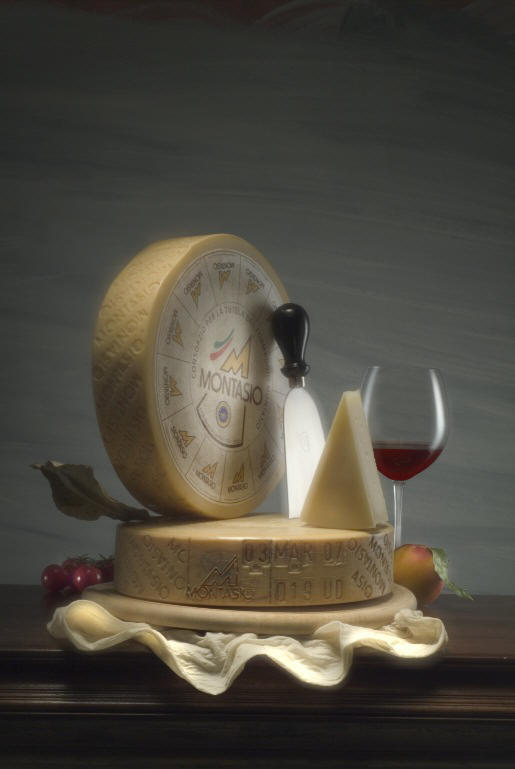
Pordenone and Udine, two provinces linked by a long, tree-lined road, are divided by the Tagliamento river, one of the cleanest in Italy, and united by the DOC Grave district extending on either side of the river, which offers Friuli Tocai and Merlot. The “Friul di la da l’aghe” – Friuli beyond the waters – is the definition of the Pordenone district in the Friulian language, an area standing out above all for traditional products from the mountains. In the foothills around Livenza, you will find the tasty (mountain dairy cheese) and smoked ricotta, which is dry-salted and smoked.
It is in this area, too, in the foothills of Val Cosa and of Valcellina that the green asparagus has its origins. Preserved in water, salt, wine vinegar, sugar and spices, or made into a cream, it becomes an excellent accompaniment to boiled or sliced meats, or a tasty hors d’oeuvre. At Clauzetto, Vito d’Asio and Spilimbergo, local producers make Asino cheese, which takes its name from Monte Asio and appears in two forms: classic and soft. Both are perfect accompaniments to boiled potatoes or a classic polenta.
The various valleys also have their own ways of curing meats, such as peta, petina, brusaula, filon and, in th Monte Cavallo area, bondiola (also called sauc).
Food in Friuli: Ham
Another highlight of the food in Friuli is definitely the ham! The Province of Udine is a melting pot of flavors. Not just frico and musetto con brovada, but also various forms of risotto, omelets, and small gnocchi with local herbs – such as sclopit – Godia potatoes, rati, the ham, and Regina di San Daniele, gubane and strucchi.
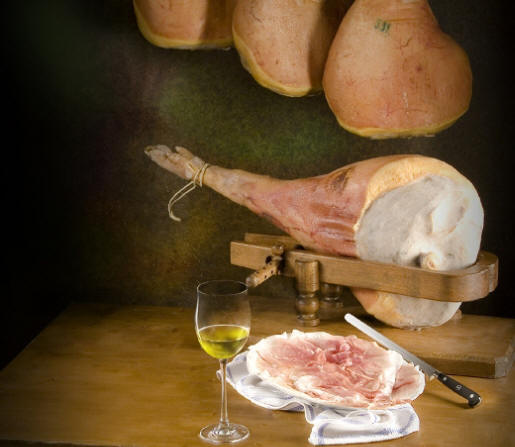
Of the traditional products found throughout the province of Udine, a veritable melting pot of flavors, the most well-known are certainly frico and musetto, together with brovada. Frico is a delicious melted cheese, either soft or crisp, accompanied with herbs, onion, spices, and even apples. The musetto, the most typical of Friuli’s sausages, has always been eaten with a brovada, made with pickled turnips preserved in marc, using a recipe one can find in the Roman recipe book of Apicius.
Among the traditional products of the earth are the sclopit, or bladder campion (also known as maiden’s tears) a wild perennial; the buds are picked before flowering and are used for tasty risottos, omelets, and small gnocchi. Then there are the yellow Godia potatoes, the rati or radishes, eaten raw or cooked and excellent with boiled meats. And finally, the lidric cul poc, winter chicory of which the root, or “poc”, is eaten.
The San Daniele area has a special air about it: not only has it preserved the codices in the Guarneriana library in perfect condition for 500 years, but it is also fundamental for imparting a unique flavor to the local ham, and for ensuring that a simple product, trout, becomes an excellent Regina di San Daniele. Raised in the fresh, oxygen-rich waters of the Tagliamento, in ideal conditions and a perfect food, these trout are filleted by hand and gently smoked before arriving on the plate, clean and rich in valuable Omega3 oils.
Centerpieces for any party are the traditional cakes of the Natisone valleys near Cividale: the famous gubana and fine strucco.
The strucco was once traditionally made for the feast of Saint Anthony and probably originally derived from the mix used to make the gubana.
This territory boasts not only a part of the DOC Grave, but also the DOC of the Colli Orientali del Friuli, with its excellent wines, such as the Schiopettino and precious Picolit. We must also mention a truly extraordinary dessert wine, the Ramandolo, guaranteed DOCG, and, finally the delicate olive oil of the Colli Orientali del Friuli.
Mountain Cuisine in Friuli region
Mountain cuisine must be highlighted while we’re talking about food in Friuli! Lively, genuine flavors, the offspring of uncontaminated nature. Headed by the famous Montasio, there are a host of unusual cheeses, like the Sot la trape, steeped in marc. Plus numerous specialties to taste in loco, amongst radic di mont, Sauris ham, preserves, and syrups.
Carnia, the Canal del Ferro, and Val Canale constitute a center of agricultural production in the mountains and boast a wealth of fine products. Montasio cheese, for example, has a protected name guarantee based on the mountain near which it is made. Curiosities include Ont, a melted butter, and cuincir, a fresh, creamy ricotta with added wild fennel seeds.
Other local cheeses include the formadi frant and a formaggio salato (salted cheese), while others shared with Val Canale and Canal del Ferro are the formaggio di malga (mountain dairy cheese), ricotta made with goat’s milk, and the highly unusual Sot la trape, steeped in red or white marc.
The products offered by the land in Carnia include sauerkraut (locally called craut garp) and the tasty, bitter, and rare radic di mont (Alpine sow-thistle). We also find Carnia borlotti beans, providing the basis for a typical tasty bean soup, the Carnia polenta maize and the savors, a dish of chopped vegetables maintaining all the taste of each component. Plus the syrups of sea buckthorn, of dandelion and of apple juice, and wonderful preserves of apples, blueberries, strawberries, raspberries, plums, and woodland fruits. A festive touch is offered by the Biscotti Esse and, in many characteristic inns of the area, the Cjalzons, the semi-sweet ravioli stuffed with a mixture of herbs or potatoes and raisins and even, sometimes, chocolate, seasoned, after cooking, with melted butter and cinnamon.
It is well worth seeking the characteristic slender strips of dried and smoked meat called indulis, the ham, and all the smoked sausages of Sauris. Not to mention the extraordinary schulta fumat, or cooked and smoked Carnia shoulder ham, the pancetta stesa and pancetta arrotolata (a form of bacon), the bacon fat, streaky bacon (from the cheeks), and cooked Carnia tongue.
Be sure to check out the first part of this article about the land of flavors and food in Friuli!
Agenzia Turismo Friuli Venezia Giulia


